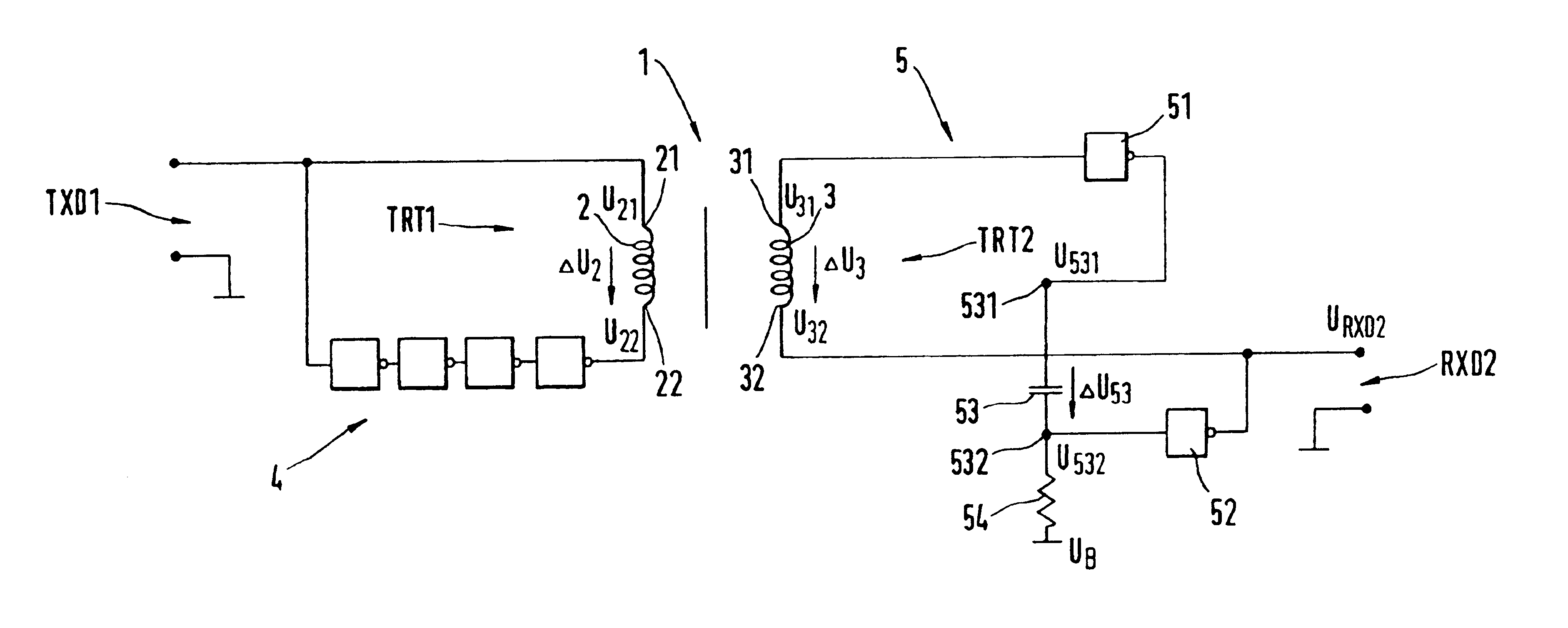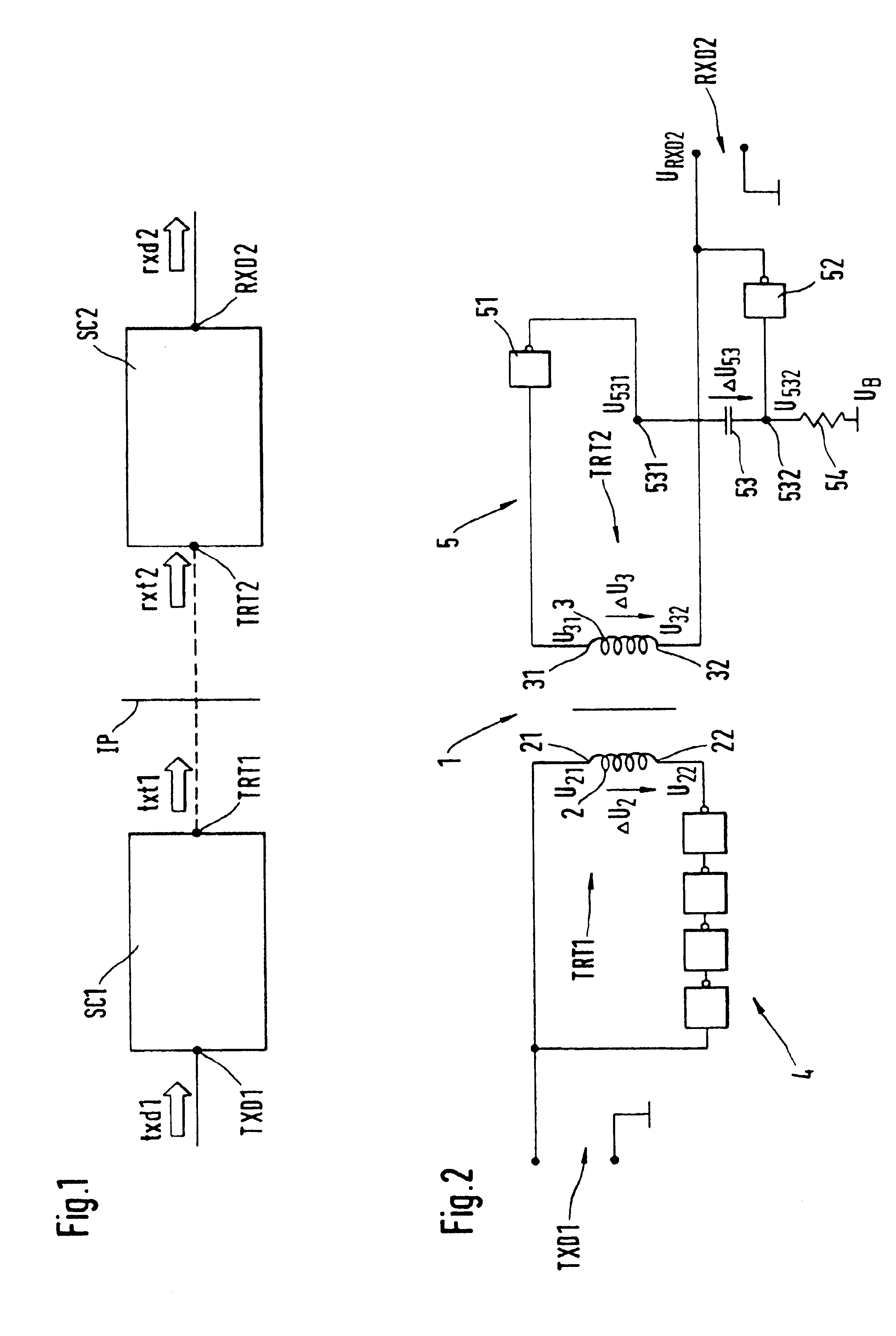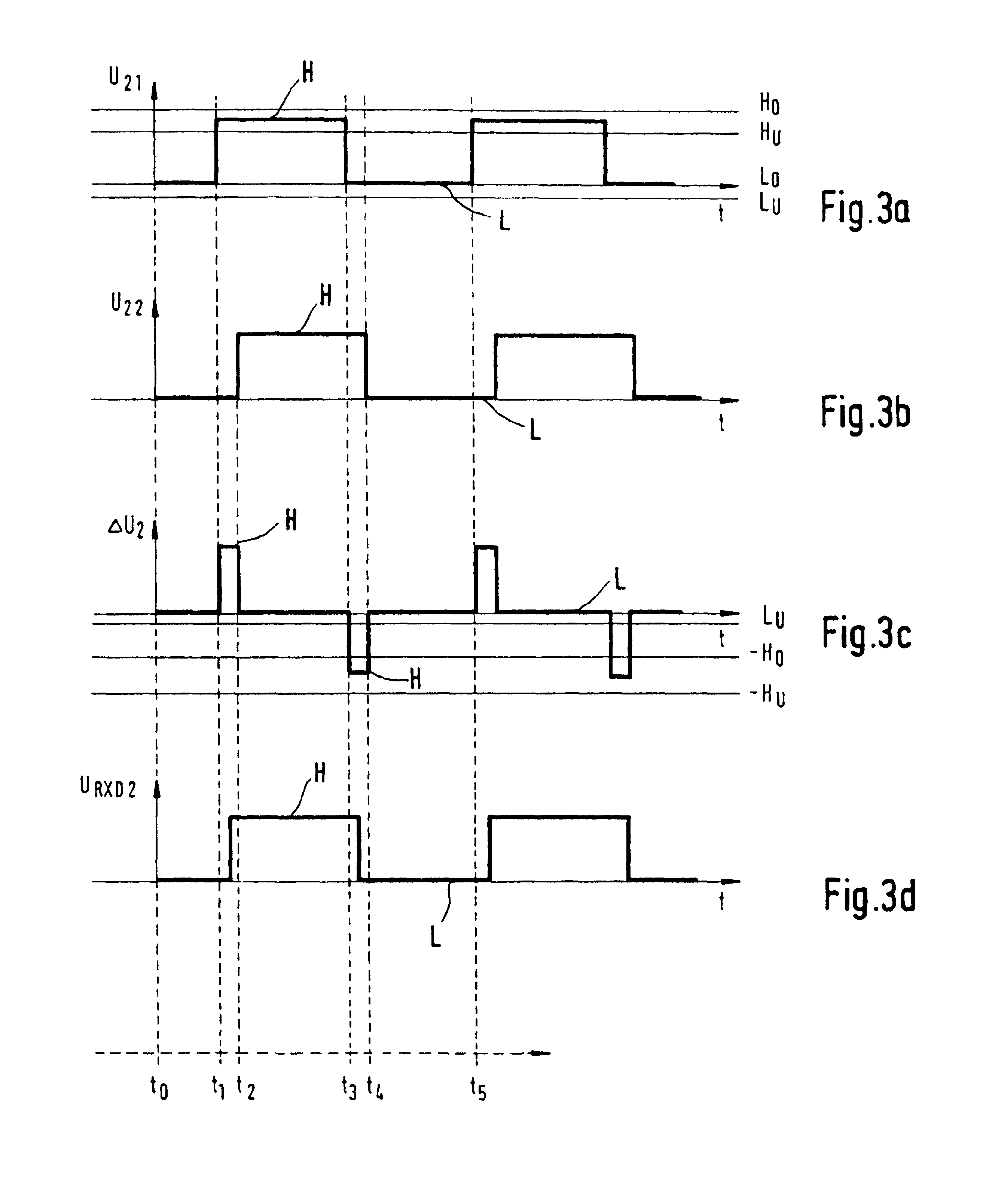Circuit arrangement for the electrically isolated transfer of digital signals
a technology of digital signal and circuit arrangement, which is applied in the direction of transmission line coupling arrangement, line-transmission, baseband system, etc., can solve the problems of significant technical complexity, unsuitable methods, and inability to suppress such interference, so as to achieve the effect of not reducing the edge steepness of the transmitted digital signal
- Summary
- Abstract
- Description
- Claims
- Application Information
AI Technical Summary
Benefits of technology
Problems solved by technology
Method used
Image
Examples
Embodiment Construction
FIG. 1 shows a schematic block diagram of a transmission channel for the electrically isolated transmission of digital signals, particularly of binary signals, between a first and a second transmitter / receiver unit (not shown) in a selected direction of transmission. The digital signal can be any two-valued electric signal of predeterminable pulse width and pulse repetition rate and of predeterminable mark-to-space ratio.
The transmission channel comprises a first digital-signal port TXD1 for a first signal to be transmitted, txd1, and a second digital-signal port RXD2 for a transmitted second digital signal rxd2.
The transmission channel further comprises a first conversion stage SC1 with a coupling-signal port TRT1, a second conversion stage SC2 with a coupling-signal port TRT2, and an isolating path IP between the coupling-signal ports TRT1, TRT2, which has a predeterminable isolation capability. The isolation capability of the isolating path IP is dependent on dielectric strength ...
PUM
 Login to View More
Login to View More Abstract
Description
Claims
Application Information
 Login to View More
Login to View More - R&D
- Intellectual Property
- Life Sciences
- Materials
- Tech Scout
- Unparalleled Data Quality
- Higher Quality Content
- 60% Fewer Hallucinations
Browse by: Latest US Patents, China's latest patents, Technical Efficacy Thesaurus, Application Domain, Technology Topic, Popular Technical Reports.
© 2025 PatSnap. All rights reserved.Legal|Privacy policy|Modern Slavery Act Transparency Statement|Sitemap|About US| Contact US: help@patsnap.com



